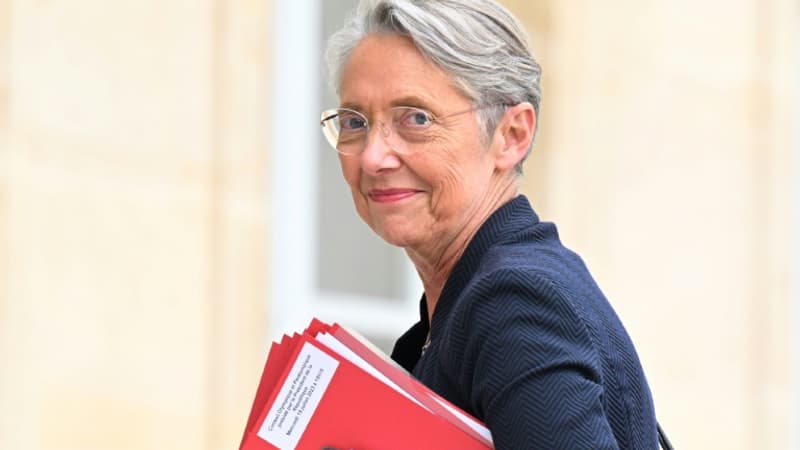What will France have to be like in 2030 if the country wants to meet its goal of reducing its greenhouse gas emissions by 50% by 2030 compared to 1990? The Government’s General Secretariat for Ecological Planning (SGPE) has just published new figures.
Each sector will be given objectives, as well as means, he said: “Several billions of euros will be invested in ecology” next year, the president added, citing in particular the opening of factories for electric batteries, offshore wind turbines, solar panels, the development of the circular industry (recycling) and the “structuring of professionals” in the thermal renovation of buildings.
The goal: to reduce France’s greenhouse gas emissions from 403.8 million tonnes of CO2 equivalent (Mt CO2e) in 2022 to 270 million in 2030. The new “dashboard” published by the SGPE distributes these savings more precisely than before.
energy and industries
This is the greatest reduction potential according to the government. The total share of renewables in all electricity production will need to increase from 26% to 34% by 2030. Solar power will need to triple, offshore wind by almost four, while onshore wind will need to increase by more than 55%. Biogas will have to increase from 8 terawatt-hours in 2020 to 50 in 2030.
Steel, cement and other primary industries will have to significantly reduce their emissions, in particular through CO2 capture, a technology that is still embryonic, but not only. The 50 centers with the highest emissions, without refining, will therefore have to go from 43 Mt CO2e emitted in 2022 to 25, and the rest of the industry from 33 to 20. Refining activity emission reduction targets are not specified, which are especially polluting.
The tertiary sector will also have to learn to do without fuel oil (more than 80% reduction requested) and gas (around -40%) through its boilers, while the French government questions the advisability of banning the installation of any new gas boiler.
Transport
The government expects that 66% of new cars sold in 2030 will be electric, compared to the current 15% (in 2035, according to a European law, it will be 100%). The government is counting on a carpooling explosion, a great source of savings: while the number of carpooling trips per day is 21,000 in 2023, it will have to increase to 196,000 in 2030.
The number of cycle lanes should reach 150,000 kilometers in 2030 compared to 61,000 by the end of 2023, while the proportion of trips made by train and urban public transport should also increase, by 20 billion passenger-km for the former and 15 billion for the latter.
On the other hand, the Government recognizes that air traffic can only be controlled: in mainland France, it will go from 237 billion passenger-kilometres transported in 2019 to 265 in 2030 (a slightly lower increase than in 2015 and 2019).
Buildings
Annual domestic emissions from the building sector must be reduced by more than half, with two large levers. First, the government expects the number of global home renovations through MaPrimeRenov to increase tenfold, to 900,000 per year by 2030.
Then, the proportion of main dwellings heated with fuel oil must be divided by three between 2020 and 2030, to reach 3.6%. Regarding the future of gas boilers in the residential sector, the Government mistrusts any public forecast.
Agriculture
The secretariat foresees 21% of surfaces in organic in 2030 against 11% in 2022, which will reduce the volumes of nitrogenous fertilizers (whose main ingredient is fossil gas). Other levers: fewer diesel tractors and the doubling of leguminous crops.
As for livestock, methane emissions (cow burps) will have to be reduced to 32.5 million tons per year compared to 36.9 in 2022. But there is no objective to reduce meat consumption…
Whats Next?
These first indicators “will be complemented, throughout the year, with more complete indicators, to cover the rest of ecological planning issues (biodiversity, adaptation, natural resources, etc.)”, specifies the SGPE.
Source: BFM TV


